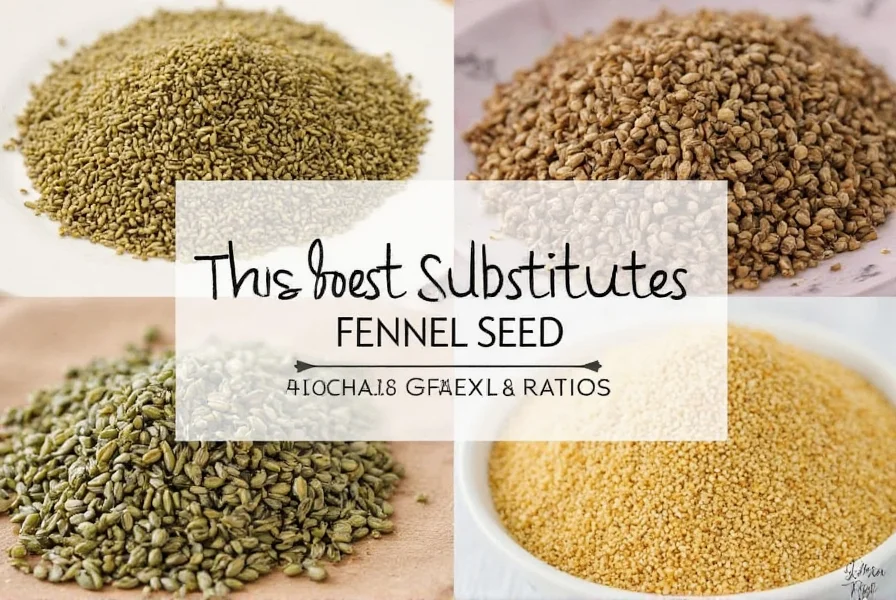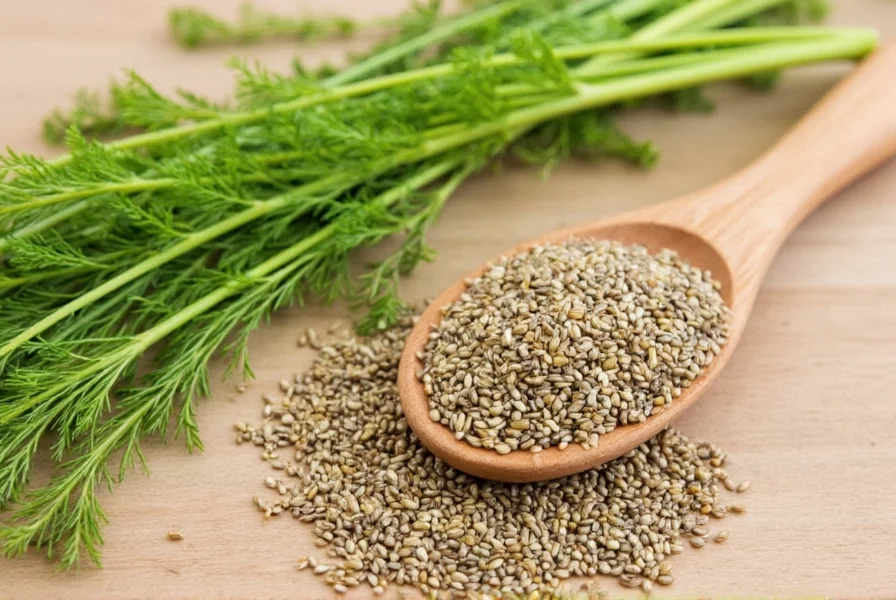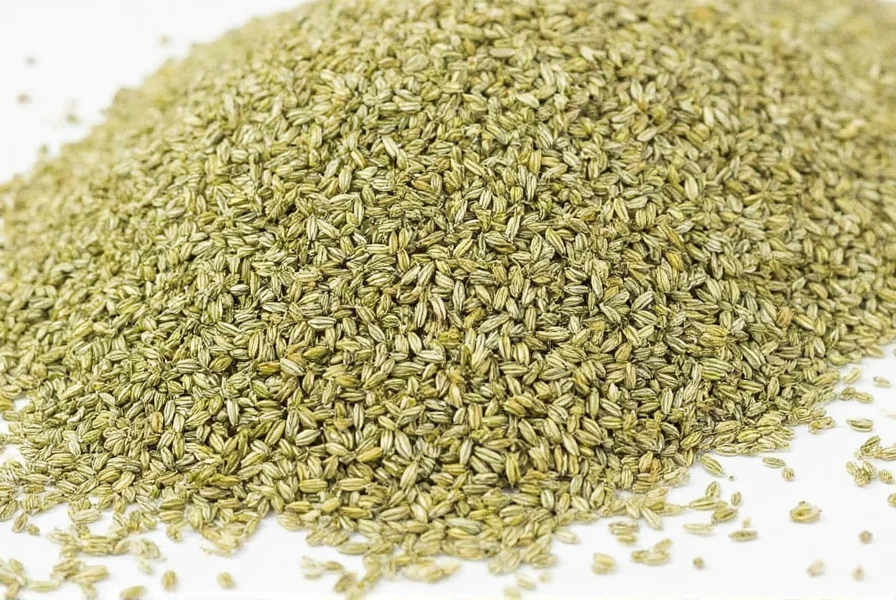The best substitutes for fennel seed are anise seeds (use 3:4 ratio), dill seeds (1:1 ratio), caraway seeds (1:1 ratio), or celery seeds (1:1 ratio). For Italian sausage recipes, anise seeds work best, while dill seeds suit Scandinavian and pickling applications. Fennel pollen offers the closest flavor match but at higher cost. Understanding flavor profiles and substitution ratios is crucial for successful recipe adaptation when fennel seed isn't available.
When you're in the middle of cooking and realize you're out of fennel seed, knowing reliable alternatives can save your recipe. Fennel seed's distinctive sweet-anise flavor appears in Italian sausages, Mediterranean breads, Indian curries, and pickling blends. This comprehensive guide explores practical substitutes with precise ratios and culinary context to ensure your dishes maintain authentic flavor profiles even without this specialty spice.
Understanding Fennel Seed's Unique Flavor Profile
Fennel seed delivers a complex flavor profile that combines sweet licorice notes with earthy, slightly floral undertones and subtle citrus hints. This distinctive combination makes it challenging to replace perfectly, but understanding its flavor components helps identify suitable alternatives. The primary compound responsible for fennel's characteristic taste is anethole, which also appears in anise and star anise, explaining why these make the closest substitutes.
Top 7 Fennel Seed Substitutes Ranked by Effectiveness
Not all substitutes work equally well across different recipes. The right choice depends on your specific dish and flavor requirements. Here's how the most common alternatives compare:
| Substitute | Flavor Similarity | Best For | Substitution Ratio | Notes |
|---|---|---|---|---|
| Anise seeds | ★★★★☆ | Italian sausage, breads, stews | 3:4 (3/4 tsp anise = 1 tsp fennel) | Stronger licorice flavor; use slightly less |
| Fennel pollen | ★★★★★ | All applications | 1:3 (1/3 tsp pollen = 1 tsp seeds) | More expensive but closest match |
| Dill seeds | ★★★☆☆ | Pickling, Scandinavian dishes | 1:1 | Milder, more herbaceous alternative |
| Caraway seeds | ★★★☆☆ | Rye bread, German cuisine | 1:1 | More earthy, less sweet than fennel |
| Star anise | ★★★☆☆ | Chinese five-spice, braises | 1 star = 1 tsp fennel | Stronger flavor; remove before serving |
| Celery seeds | ★★☆☆☆ | Soups, salads, dressings | 1:1 | More savory, less sweet alternative |
| Fennel fronds | ★☆☆☆☆ | Garnishes, light dishes | N/A (fresh only) | Much milder; use as garnish not substitute |
Best Substitutes by Culinary Application
The ideal fennel seed replacement varies significantly depending on your specific recipe. Understanding which substitute works best for particular dishes ensures optimal flavor results.
Italian Cooking and Sausage Making
For authentic Italian sausage recipes where fennel seed is essential, anise seeds provide the closest flavor match. Use a 3:4 ratio (slightly less anise than fennel called for) to prevent overpowering the dish. Many professional sausage makers actually blend fennel and anise seeds for complex flavor. When making meatballs or tomato sauces, dill seeds offer a milder alternative that won't dominate other herbs.
Pickling and Preserving
In pickling blends, dill seeds serve as the superior substitute for fennel seed, maintaining the traditional flavor profile without overwhelming sweetness. The 1:1 substitution ratio works perfectly in most brine recipes. For bread and butter pickles, consider using a combination of dill and celery seeds (half and half) to replicate fennel's complex profile.
Mediterranean and Indian Cuisine
When preparing Mediterranean fish dishes or Indian curries, caraway seeds work better than anise as a fennel substitute. Caraway's earthier profile complements cumin and coriander better than the sweeter anise. For Indian recipes specifically, use slightly less caraway than fennel called for, as its flavor intensifies during cooking.
Advanced Substitution Techniques
Professional chefs often employ blending techniques to create more accurate fennel seed replacements when the exact spice isn't available.
Creating a Custom Fennel Seed Blend
For recipes where fennel seed plays a starring role, combine:
- 1/2 tsp anise seeds
- 1/4 tsp dill seeds
- 1/4 tsp celery seeds
This blend replicates fennel's complex flavor profile more accurately than any single substitute. Toast the mixture lightly in a dry pan before use to enhance flavor complexity—a technique particularly valuable for fennel seed replacement in Italian cooking where authenticity matters.
When Substitution Won't Work
Some recipes rely so heavily on fennel seed's unique chemistry that substitutes fall short. Traditional Italian sausage recipes using 2-3 tablespoons of fennel seed per pound of meat create emulsions that affect texture as well as flavor. In these cases, consider modifying the recipe rather than substituting—reducing other strong flavors to compensate for the missing fennel profile.
Storage Tips for Substitute Spices
Proper storage maintains the potency of your substitute spices. Keep seeds in airtight containers away from light and heat. Whole seeds retain flavor longer than ground versions—typically 2-3 years versus 6-12 months. For best results with fennel seed alternative for pickling, buy small quantities of fresh seeds rather than relying on older pantry staples.
FAQ: Common Questions About Fennel Seed Substitutes
Can I use ground fennel instead of fennel seeds?
Yes, use 3/4 teaspoon ground fennel for every 1 teaspoon fennel seeds called for in your recipe. Ground fennel delivers more concentrated flavor since the essential oils are already released, so slightly less is needed. For the best results in Italian sausage recipes, toast whole seeds briefly before grinding.
What's the best fennel seed substitute for making sausage?
Anise seeds provide the closest flavor match for Italian sausage, using a 3:4 ratio (3/4 teaspoon anise for every 1 teaspoon fennel seed). Many professional butchers actually blend fennel and anise seeds for complex flavor. For a milder alternative that still maintains authenticity, use dill seeds at a 1:1 ratio, which works particularly well in breakfast sausages.
How do I substitute fennel seed in baking recipes?
In baking applications like breads and cookies, fennel pollen offers the most authentic substitution at a 1:3 ratio (1/3 teaspoon pollen equals 1 teaspoon seeds). If pollen isn't available, combine equal parts anise and caraway seeds for a balanced flavor that won't overpower delicate baked goods. For Scandinavian rye breads, caraway alone works best as a fennel seed replacement.
Can I use fennel bulb instead of fennel seeds?
Fennel bulb cannot directly substitute for fennel seeds as they serve different culinary purposes. The bulb provides fresh, mild anise flavor in salads and roasted dishes but lacks the concentrated, earthy notes of the seeds. For recipes requiring fennel seed's distinctive flavor, use the bulb as a complementary ingredient rather than a replacement—roast chopped bulb alongside your dish to enhance the overall fennel profile.
What's the difference between anise and fennel seed for substitution?
Anise seeds have a stronger, more intense licorice flavor than fennel seeds, so use slightly less (3:4 ratio). Fennel offers a more complex profile with citrus and herbal notes alongside the anise flavor. For most savory applications like sausage making, anise works well as a substitute, but for delicate dishes or where fennel's subtle complexity matters, consider a blend of anise and dill seeds to better replicate fennel's full flavor spectrum.













 浙公网安备
33010002000092号
浙公网安备
33010002000092号 浙B2-20120091-4
浙B2-20120091-4